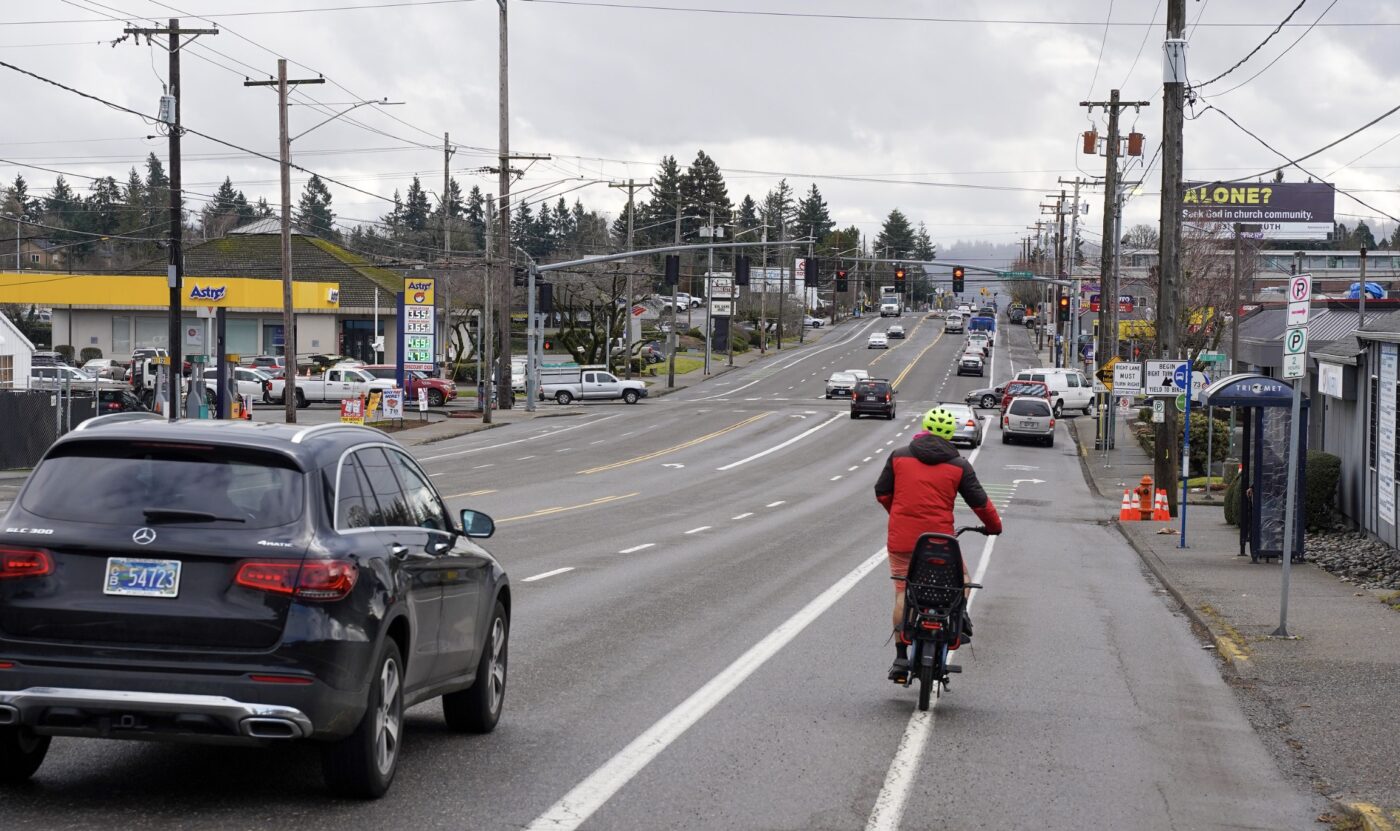 3 out of 4 traffic deaths in Portland happen on “High Crash Network” streets like 122nd Ave. (Jonathan Maus/BikePortland)
3 out of 4 traffic deaths in Portland happen on “High Crash Network” streets like 122nd Ave. (Jonathan Maus/BikePortland)
“PBOT can design safe streets, but we cannot reach our safety goals by focusing on street design alone.”
It’s no longer possible for the City of Portland to dismiss the startling toll of traffic deaths as an aberration. At City Council today, leaders of the transportation bureau will face the incontrovertible facts as they ask Mayor Ted Wheeler and the other four commissioners to accept a Deadly Crash Report that includes 69 confirmed fatalities — the most recorded in at least three decades.
2023 was the fourth year in a what the Portland Bureau of Transportation referred to in a statement released today as an, “increase in egregious travel behaviors among people using the streets.” Those behaviors, PBOT will share in a presentation today, are partly to blame for a consistent spike in the annual death toll that has been over 50 Portlanders per year since 2020. Prior to that year, the last time we suffered more than 50 road deaths was 1996.
When Portland proudly passed its Vision Zero goal in 2015, there were 37 traffic fatalities. That means despite our city’s focused effort on this problem and millions invested in infrastructure, education, and programs, we’ve nearly doubled the amount of deaths with just two years left before our target date of eliminating them.
At City Council today, PBOT will focus on two core themes: how the behavior or road users is largely to blame for the uptick in deaths; and that they need more “cross bureau collaboration” to address it.
“PBOT can design safe streets, but we cannot reach our safety goals by focusing on street design alone,” PBOT Director Millicent Williams said in a statement. “Ending traffic deaths depends significantly on traffic enforcement and the efforts by government and community partners. This includes important work to provide social services, mental health treatment, drug and alcohol addiction services, housing services, investments in state highways and facilities. It also depends on every single person in our community making a commitment to traveling safely.”
PBOT’s statement included a list of “simple actions everyone can take now to help PBOT eliminate traffic deaths and serious injuries in Portland,” that included things like driving slower, watching for other road users, leaving the car at home and taking a different mode, installing yard signs, and not driving while impaired by drugs or alcohol.
No one at council today can act like we don’t know what’s going on or how to solve it. The trends are clear: 74% of deaths happen on high-speed, car-centric arterial streets; 40 of the 69 traffic deaths involved speeding, and nearly one in five people killed in our streets last year were homeless.
PBOT will have a lot of research and evidence on their side when they lean into the “Safe System” approach, which has “shared responsibility between those who design, manage, operate, and use the system,” as its main tenet.
But buzzwords and admonitions for safer behavior are likely to fall on deaf ears of advocates and skeptical electeds. “Visions are not enough, we need swift action and concrete investments to save lives,” said a statement released this morning from The Street Trust Executive Director Sarah Iannarone.
Iannarone said her organization is “saddened and concerned but not surprised” at the record death toll. “For years, advocates have been sounding the alarm on the worsening epidemic of traffic violence in our community and proposing solutions which have been ignored by the City Council, so of course the problem continues to worsen.”
To combat the “crisis conditions”, The Street Trust is calling on the City of Portland to implement a citywide 20 mph speed limit. They are also urging PBOT to more strongly enforce its policy of daylighting intersections (pulling parked cars away from corners to increase visibility), do more automated enforcement with cameras, and work with state legislators to reduce the blood-alcohol content (BAC) limit from from .08 to .05.
So far, beyond calling for more meetings with other bureaus, PBOT hasn’t acknowledged any shortcomings in their existing approach — nor have they shared details about what they plan to do differently to save lives going forward.
Stay tuned for coverage of the council meeting. You can watch it on YouTube here.

